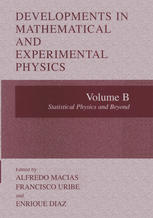

Most ebook files are in PDF format, so you can easily read them using various software such as Foxit Reader or directly on the Google Chrome browser.
Some ebook files are released by publishers in other formats such as .awz, .mobi, .epub, .fb2, etc. You may need to install specific software to read these formats on mobile/PC, such as Calibre.
Please read the tutorial at this link: https://ebookbell.com/faq
We offer FREE conversion to the popular formats you request; however, this may take some time. Therefore, right after payment, please email us, and we will try to provide the service as quickly as possible.
For some exceptional file formats or broken links (if any), please refrain from opening any disputes. Instead, email us first, and we will try to assist within a maximum of 6 hours.
EbookBell Team

4.1
30 reviewsThe FIRST MEXICAN MEETING ON MATHEMATICAL AND EXPERI MENTAL PHYSICS was held at EL COLEGIO NACIONAL in Mexico City, Mexico, from September 10 to 14, 2001. This event consisted of the LEOPOLDO GARciA-COLIN SCHERER Medal Lecture, delivered by Prof. Nicholas G. van Kampen, a series of plenary talks by Leopoldo Garcia CoHn, GUnter Nimtz, Luis F. Rodriguez, Ruoon Barrera, and Donald Saari, and of three parallel symposia, namely, Cosmology and Gravita tion, Statistical Physics and Beyond, and Hydrodynamics and Dynam ical Systems. The response from the Physics community was enthusi astic, with over 200 participants and around 80 speakers, from all over the world: USA, Canada, Mexico, Germany, France, Holland, United Kingdom, Switzerland, Spain, and Hungary. The main aim of the conference is to provide a scenario to Mexican researchers on the topics of Mathematical and Experimental Physics in order to keep them in contact with work going on in other parts of the world and at the same time to motivate and support the young and mid career researchers from our country. To achieve this goal, we decided to invite as lecturers the most distinguished experts in the subjects of the conference and to give the opportunity to young scientist to communi cate the results of their work. The plan is to celebrate this international endeavor every three years.